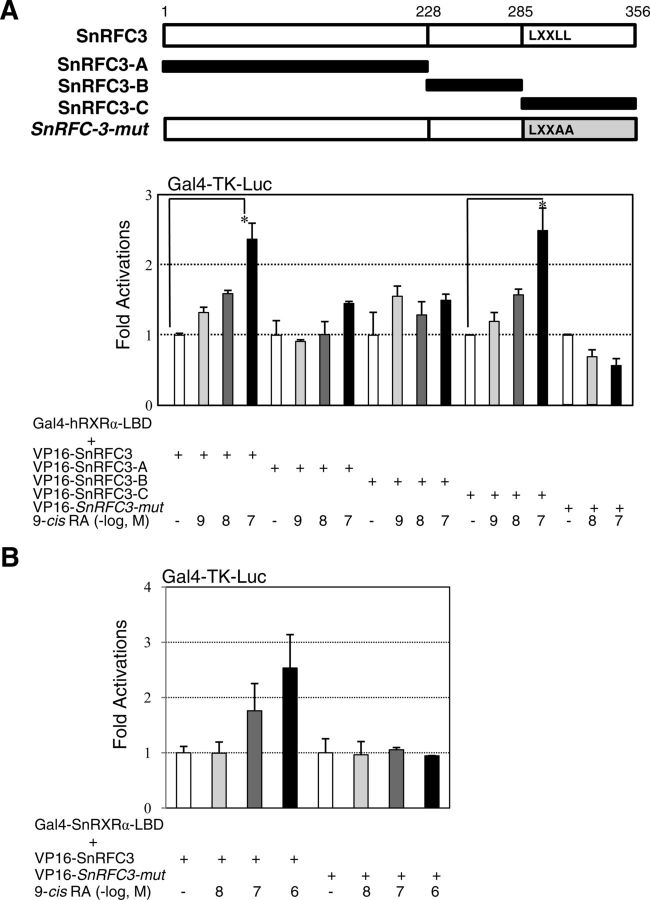Fig. 2.
Sea urchin RFC3 interacts with RXRα of human or sea urchin in a 9-cis-RA- and LXXLL-dependent manner. A, Full-length sea urchin RFC3 (SnRFC3), fragments (SnRFC3-A, -B, and -C), and a site-directed mutant at the LXXLL motif (SnRFC3-mut) were fused to the VP16 gene, as depicted in the schematic diagram, and the constructs (200 ng each) were transfected into 293T cells along with the Gal4-Tk-Luc reporter vector (200 ng), Gal4-hRXRα-LBD (20 ng), and LacZ expression vector (pRSV-β-gal, 200 ng). At 24 h after transfection, the cells were incubated in the presence of 9-cis-RA at three different dosages (10−9, 10−8, and 10−7 m) for 18 h. All cells were lysed and the luciferase activities were measured and normalized against LacZ expression as an internal control. Values are the average of three independent assays (mean ± SD), which were normalized to the same amount of DMSO-treated cells transfected with the Gal4-hRXRα-LBD and VP16-SnRFC3 series. (B) Sea urchin RXRα-LBD (SnRXRα-LBD) interacts with SnRFC3 in a 9-cis-RA-dependent manner. The SnRXRα-LBD region (229–463 amino acids) was inserted to the Gal4-DBD expression vector and this construct (20 ng) was used in the mammalian two-hybrid assays as described in (A). Statistical changes were determined by the Student's t test (two-tailed) and are denoted as (*) for P < 0.05.

